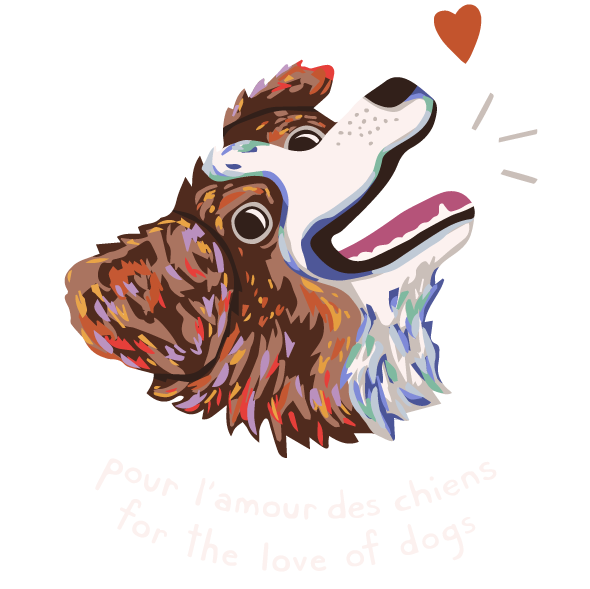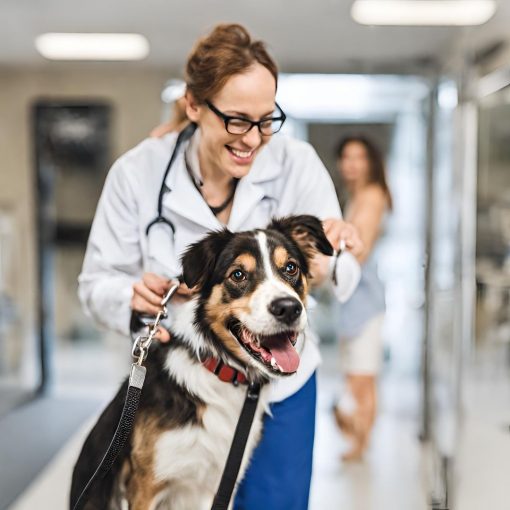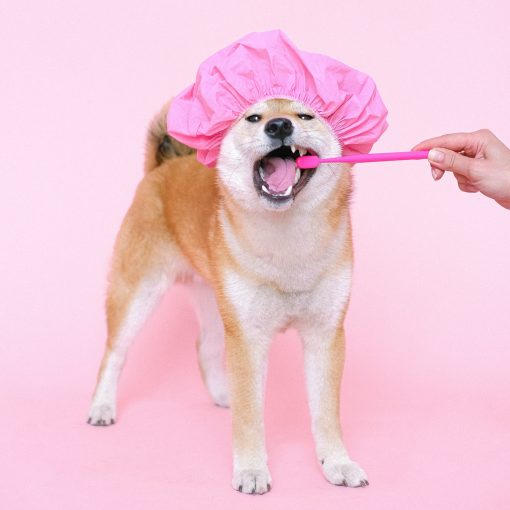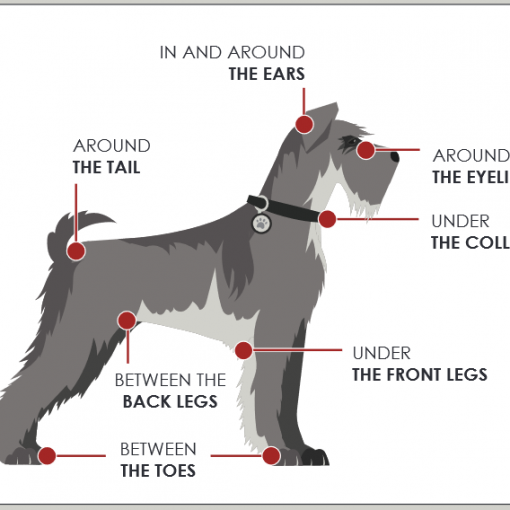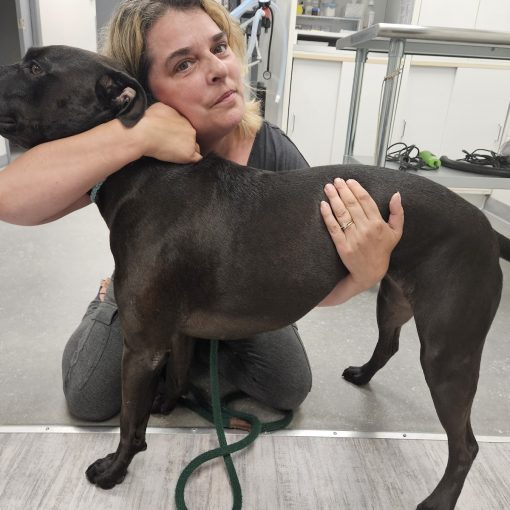What are start button behaviours and how can they help your dog give choice and reduce fear based aggression during veterinary exams and grooming procedures.
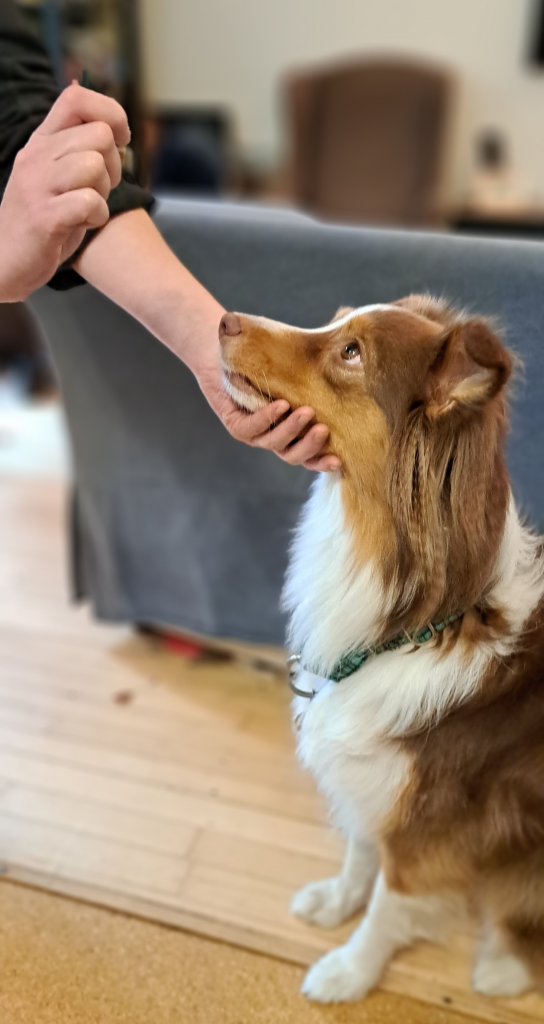
Mia has a great chin rest
A start button is a term coined by Eva Bertilsson and Emelie Johnson Vegh (and adopted by Karen Pryor), two trainers from Sweden who at the time through their company Carpe Momentum, were developing precise ways of training agility. Though the idea has definitely been part of animal training for a long time (setting up your learner so they know what to expect is just good training), refining the concept and putting emphasis on how to use it has had amazing implications in both sports and behaviour training.
As trainers, we often want to use what your dog wants most in order to get the behaviour we are looking for. If your dog has trouble outside with things that move, human or animal, we often want to use something of high value for them but also something they need, like food. That is because food is a primary reinforcer. “Primary reinforcers are reinforcers that have innate reinforcing qualities. These kinds of reinforcers are not learned. Water, food, sleep, shelter, sex, and touch […].”(Kate Votaw). Another primary reinforcer we don’t often think about is control. Not only as living beings do we like feeling in control, it can be essential if we are afraid of something – like the need to get away from something that could be endangering our lives.
Our dogs do not innately understand that constraint is ok. We can’t tell them that trimming their nails will be more comfortable for them and help them walk or that the vaccine at the vet will prevent illness. Some dogs like constraint a lot less than others (hello my spitz owners) and that’s where start buttons can come in and help you.
A start button is a behaviour you teach your dog, so that they know what comes next. It predicts the next action. An easy example is your front door. If every time you touch your door knob and you ask your dog to sit, they know once they sit, that front door opens. With time you can simply place your hand on the doorknob and wait for them to sit, and when they do, you reinforce that behaviour by opening the door. Now what if your dog was scared to go outside? What if when you touch the doorknob, they knew if they didn’t, they wouldn’t have to go? Now your dog has control over the next action.
For things like vaccines, veterinary handling or basic grooming often dogs can have a lot of trouble. At their least, they are uncomfortable but at their worst, they can be terrifying for your dog (which also means dangerous for you!). To use a chin rest to add the concept of control (or choice), you first teach your dog to rest their chin in your hand (while sitting usually is easiest to start) with duration. Once your dog is comfortable with this, you start to very gently and slowly touch the part of your dog they are more sensitive to. This is where the desensitization comes in. As you slowly start to manipulate your dog the way a vet would, or play with their toes for nail trimming, you stop if your dog moves their head out of the chin rest position. You then reward when your dog puts their head back into position. This way if your dog is uncomfortable, they can communicate this by simply removing their head. Your dog learns that putting their head back into position, means the process continues. In using this, little by little you can have your dog accept veterinary manipulation or routine blood draws (with the help and patience of a great fear free vet team).
Here are the steps:
- Have many delicious treats in one hand (almost as many as you can hold).
- Cup your other hand and gently lure your dog’s head so that their chin is resting on your hand.
- Reward a few times, say OK (or release cue of your choice) and throw another treat further away from you.
- As your dog comes back to you (because you have the food) lure their head again over your hand and reward a few times, then say “OK” and toss a treat away from you.
- After a few practices, you want to remove the lure and have your dog understand to bring their chin to your hand with your word and gesture. Cup your hand in front of your dog and point with an empty hand, if your dog moves towards your hand, say YES and then grab your treats and reward several times.
- We are rewarding several times in a row because what this behaviour needs is duration (yes back to our 3 D’s). Your dog needs to keep their chin in your hand. The best way to start getting that is to reward your dog many times in the same position, they they hang out and eat the buffet.
- After your dog is keeping their chin in your hand for a few seconds on cue, make sure to increase the duration and add some distraction. Continue rewarding while you play dogs barking on youtube or place your dog’s favourite toys around while you practice. If you don’t have a Labrador, you can use food placed in strategic inaccessible places that distract your dog just enough but that allows them to still give you the behaviour you are looking for (a joke for all my lab owners out there).
Basically now you need to increase the time your dog can give you the behaviour so that either you or a second person can now come and slowly start to perform the things on your dog they dislike. You will need to transfer this behaviour to a cushion or towel if you live alone and will be doing most of the training yourself (start to shift your hand onto the towel and slowly fade your hand so you are left with only the towel to ask their dog to place their chin on).
If it’s not going well, remember to go back to your last success and work up from there. Remember your dog has a warming up period, so never start your training exactly where you left off. When you change something in the environment, also go back a step to make it easier for your dog to understand. Remember the best training tip is always set your dog up for success. We love to teach start button behaviour at For the Love of Dogs so contact us for help as needed.
Happy Training,
Riannon Horan
Owner/Trainer For the Love of Dogs/Pour l’Amour des Chiens
Primary And Secondary Reinforcers, Kate Votaw, https://socialsci.libretexts.org/Bookshelves/Psychology/Introductory_Psychology/General_Psychology_for_Honors_Students_(Votaw)/18%3A_Operant_Conditioning/18.04%3A_Primary_And_Secondary_Reinforcers
